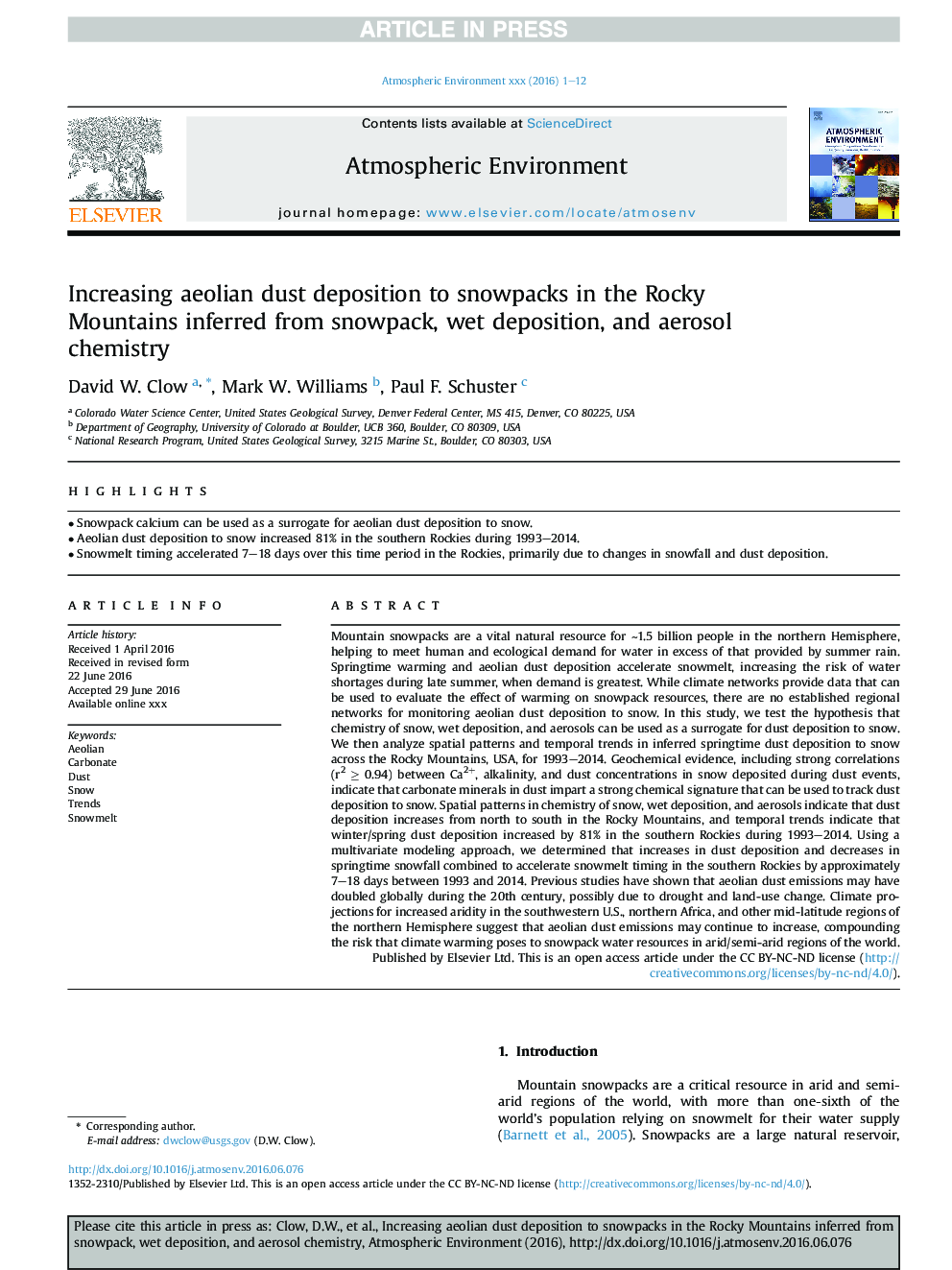| کد مقاله | کد نشریه | سال انتشار | مقاله انگلیسی | نسخه تمام متن |
|---|---|---|---|---|
| 5753273 | 1620328 | 2016 | 12 صفحه PDF | دانلود رایگان |
عنوان انگلیسی مقاله ISI
Increasing aeolian dust deposition to snowpacks in the Rocky Mountains inferred from snowpack, wet deposition, and aerosol chemistry
ترجمه فارسی عنوان
افزایش میزان رسوبدهی گرد و غبار به بسته های برف در کوه های راکی، که از برف پک، رسوب مرطوب و شیمی آلی
دانلود مقاله + سفارش ترجمه
دانلود مقاله ISI انگلیسی
رایگان برای ایرانیان
کلمات کلیدی
موضوعات مرتبط
مهندسی و علوم پایه
علوم زمین و سیارات
علم هواشناسی
چکیده انگلیسی
Mountain snowpacks are a vital natural resource for â¼1.5 billion people in the northern Hemisphere, helping to meet human and ecological demand for water in excess of that provided by summer rain. Springtime warming and aeolian dust deposition accelerate snowmelt, increasing the risk of water shortages during late summer, when demand is greatest. While climate networks provide data that can be used to evaluate the effect of warming on snowpack resources, there are no established regional networks for monitoring aeolian dust deposition to snow. In this study, we test the hypothesis that chemistry of snow, wet deposition, and aerosols can be used as a surrogate for dust deposition to snow. We then analyze spatial patterns and temporal trends in inferred springtime dust deposition to snow across the Rocky Mountains, USA, for 1993-2014. Geochemical evidence, including strong correlations (r2 â¥Â 0.94) between Ca2+, alkalinity, and dust concentrations in snow deposited during dust events, indicate that carbonate minerals in dust impart a strong chemical signature that can be used to track dust deposition to snow. Spatial patterns in chemistry of snow, wet deposition, and aerosols indicate that dust deposition increases from north to south in the Rocky Mountains, and temporal trends indicate that winter/spring dust deposition increased by 81% in the southern Rockies during 1993-2014. Using a multivariate modeling approach, we determined that increases in dust deposition and decreases in springtime snowfall combined to accelerate snowmelt timing in the southern Rockies by approximately 7-18 days between 1993 and 2014. Previous studies have shown that aeolian dust emissions may have doubled globally during the 20th century, possibly due to drought and land-use change. Climate projections for increased aridity in the southwestern U.S., northern Africa, and other mid-latitude regions of the northern Hemisphere suggest that aeolian dust emissions may continue to increase, compounding the risk that climate warming poses to snowpack water resources in arid/semi-arid regions of the world.
ناشر
Database: Elsevier - ScienceDirect (ساینس دایرکت)
Journal: Atmospheric Environment - Volume 146, December 2016, Pages 183-194
Journal: Atmospheric Environment - Volume 146, December 2016, Pages 183-194
نویسندگان
David W. Clow, Mark W. Williams, Paul F. Schuster,
